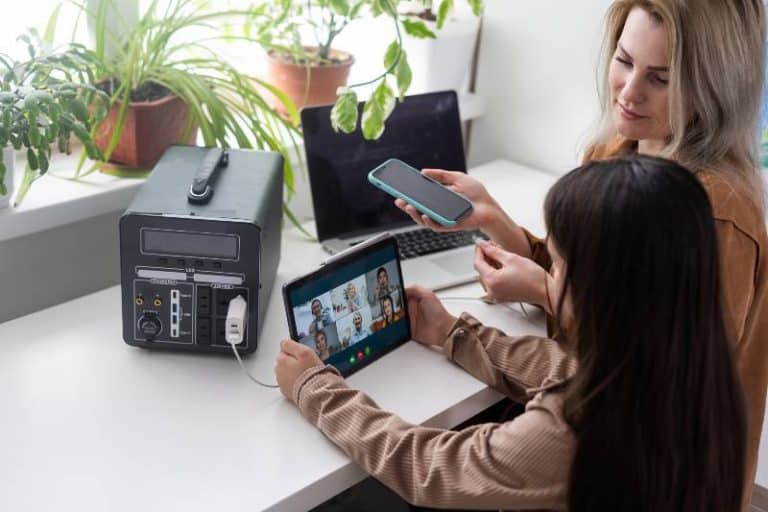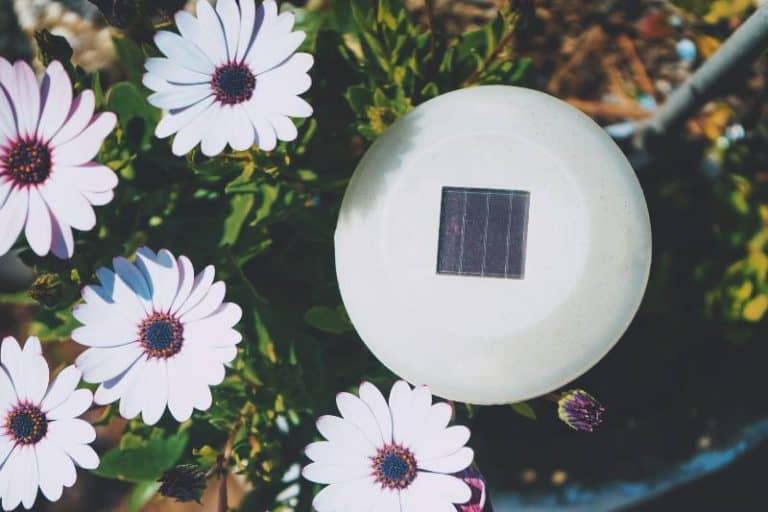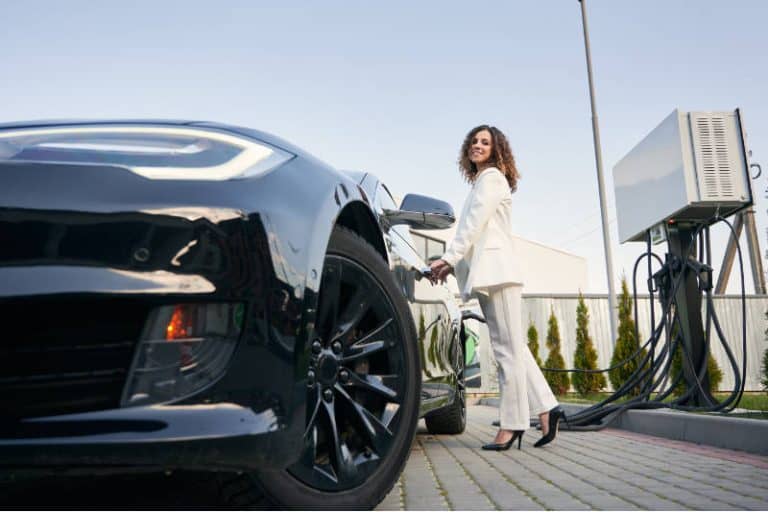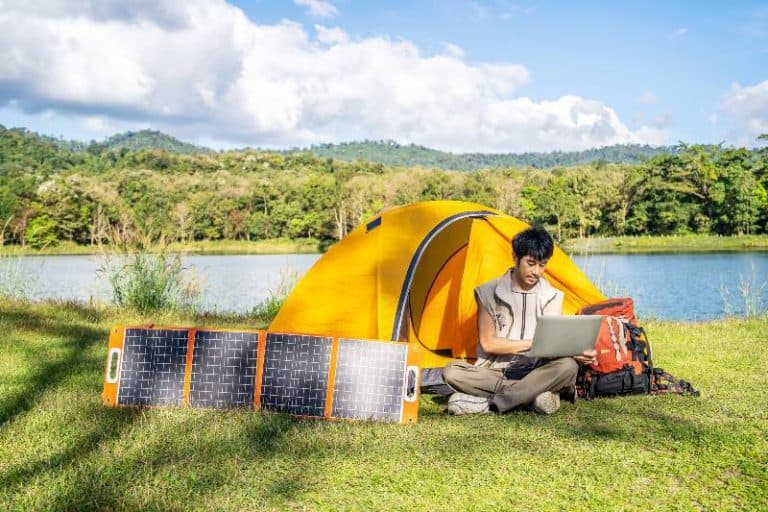Does Portable Solar Panel Work In The Shade?
There is a lot of debate about whether or not portable solar panels produce electricity and can be effective in shady areas. Some people say that the shade will completely block the sun’s rays and prohibit the solar panel from working properly. Others claim that there are ways to work around this issue. So, what’s the truth, Does portable solar panel work in the shade?
In truth, solar panels that are in the shade will still function, but at a decreased capacity due to less sunshine exposure. If you’re looking to get the most power possible from your portable solar panel system, it’s best to set it up in an area where it will be hit by direct sunlight for the majority of the day.
Key Takeaways
- Portable solar systems work best in direct sunlight, but they can also work on cloudy days and in partial shade.
- During the wet season, solar panels will create less energy, but they won’t produce any energy at all.
- Solar panels benefit from rain as well. You might think of this time of year as solar panel cleaning season.
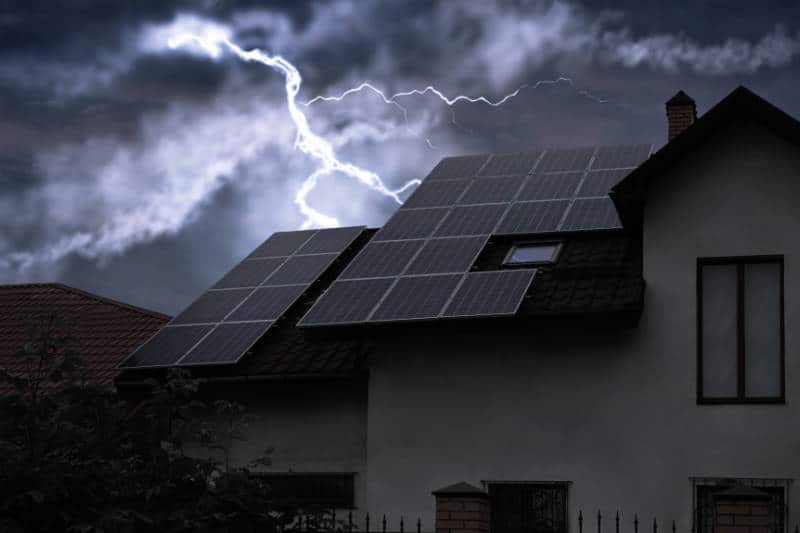
Do solar panels need direct sunlight?
Solar cells are the key component of solar panels. While solar panels can be made from a variety of materials, it is the solar cells that convert sunlight into electricity.
Portable solar systems work best in direct sunlight, but they can also work on cloudy days and in partial shade. This is because photovoltaic (PV) panels use particles of light, called photons, to generate electricity. Photons are present in direct and indirect sunlight, so solar panels can operate in both conditions.
However, it’s important to note that the amount of power generated by a solar panel will depend on how much sunlight it is exposed to. If a solar panel output is in the shade, it will not be able to generate as much power as if it were in direct sunlight.
Weather conditions can also impact sunlight availability
Weather conditions can impact sunlight availability and the amount of electricity produced by a portable solar power system. Sunshine levels vary throughout the year, with more available sunlight during the summer months than winter months.
However, even during the summer months when there is plenty of sunshine, it may not be enough to power all of your devices at once if they’re all plugged into one system once. You’ll need multiple systems if you want to power different devices at different times during the day and night.
Partial shade may still be effective
Even if you’re in a shady area, you may still be able to get some power from your portable solar panel. This is because the panels can still generate electricity from partial sunlight. So, if you’re in an area with some trees or other objects that are blocking the sun, you may still be able to get power from your solar panel.
It’s important to experiment with different positions
If you’re not getting the power output that you want from your portable solar panel, it’s important to experiment with different positions. The angle of the sun changes throughout the day, so you may need to adjust the position of your solar panel to maximize its power output. You may also need to adjust the position of the solar panel based on the season, as the sun’s position in the sky changes throughout the year.
Overall, it is possible to generate power from a portable solar panel even if you’re in a shady area. However, you may not be able to generate as much power as you would if you were in direct sunlight. Take note to experiment with different positions and angles to get the most power output from your solar panel.
Strategies and technologies for dealing with shaded solar panels
Solar power systems are becoming increasingly popular, and it is easy to understand why. The cost of solar panels has been dropping steadily, making them more affordable for homeowners, businesses, and even some utilities.
But there is one big drawback: the sun does not shine all day long. This means that solar panels may produce less energy production than expected in some locations. For example, a home near a forest or a mountain might have shaded solar panels for part of the day.
So how can you get more energy from your solar panels? Here are some strategies and technologies for dealing with shaded solar panels:
Site your solar panel array where there will be no regular shading
To maximize the performance of your solar panels, it’s important to think about the location where they will be installed. One of the strategies for dealing with shaded solar panels is to Site your solar panel array where there will be no regular shading.
Any shading you have to deal with can be reduced by using flat glass or low-emissivity glass in front of your panels. The flat glass allows more light through than low-emissivity glass, which blocks more heat than clear glass. Many people prefer to use high-quality, tempered glass because it’s easier to clean than low-quality tempered glass and it doesn’t scratch easily.
Reasons You Should Switch To Portable Solar Power
If you’re a fan of the outdoors, you’re probably already aware of how important it is to be prepared for any situation. Whether you’re going on a camping trip or just spending some time in the backyard, having access to power can make all the difference.
There are many different ways to generate electricity, but portable solar power is one of the most convenient and versatile options available today. Here are some reasons why you should consider switching to portable solar power:
You won’t need to run wires or drill holes in your roof
One of the biggest reasons why people don’t want solar is because they think it will require them to make extensive changes to their homes. They are worried that they will have to tear up their roof and run wires through their homes.
Luckily, this isn’t the case with portable solar power systems. These systems can be easily installed on your roof, or even in a window! They typically come with a battery pack that is permanently mounted on your wall or ground, which means you won’t have to worry about drilling holes in your home or making major changes as long as they stay put.
You can get power while you’re parked in the shade
You can now park your vehicle under a tree or in an area that gets shade and still get some juice for your phone or another device. This is especially useful when traveling or camping out where there may not be any outlets close by or you may not have access to an electrical outlet for charging your devices.
It’s great having a portable solar charger with you on any trip because it will allow you to charge all your devices while on the go!
They don’t take up a lot of space
Portable solar power systems are small enough to fit in your backpack or purse and can be used to charge your phone or other mobile devices, run small appliances like laptops and lights, and sometimes, even power larger items like televisions and refrigerators.
Portable solar power systems are smaller than regular solar panels, but they work just as well. They use the same technology as regular solar panels, but they’re more portable and easier to use.
You can install these panels in your home or take them with you when you’re traveling.
Maintenance is almost effortless
Solar panels are made out of silicon, which is one of the most common elements on earth. It’s also used in many other products such as glass and computer chips. This means that there are plenty of replacement parts available if anything goes wrong with your solar panels. You can also find solar panel repair kits that include everything you need to get your solar panels back up and running within minutes.
As long as you keep your panels clean, they’ll last for years without any problems whatsoever.
They can easily be moved to a new RV
If you’re looking to upgrade your RV Solar System, there are a few reasons why you should consider portable solar panels. While they might be less powerful than traditional RV solar panels, they come with some benefits that make them worth considering.
The first reason why you should consider getting portable solar panels for your RV is that they can easily be transferred to another RV. If you’re planning on selling your current vehicle and getting a new one, it’s going to be much easier if you can just transfer your portable solar panels over instead of having to replace them completely. Additionally, if something happens and your original RV gets damaged or destroyed in an accident, then you’ll still have access to power from your portable panels even though the vehicle itself isn’t working anymore.
The best part about portable solar panels is that they can be mounted on the roof or on another flat surface of your RV. This makes installation much easier than traditional systems, which typically require a lot of wiring and installation time. You simply place the panel in position, plug it in and you’re good to go!
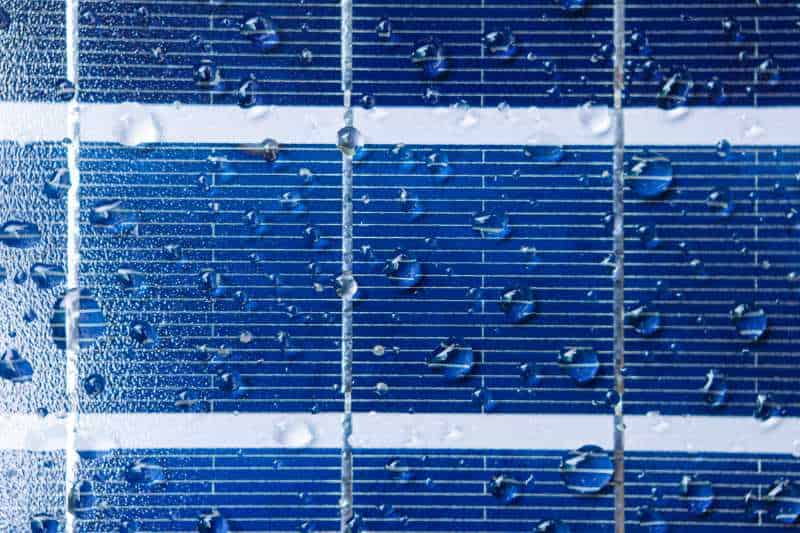
Does portable solar panel work in the shade FAQs
Do solar panels work when raining?
Solar panels produce less power during the rainy season but they won’t be zero-production. Rain is also good for solar panels. You can treat this season as cleaning time for your solar panels. You get a free and natural cleaning when it rains.
The rainwater will flow down to your panel, and it will take some dirt with it. This is an advantage because if you don’t clean your solar panels, they will become dirty and they won’t work well anymore. That’s why rainwater is good for it.
The rainwater will also clean up the dust on the surface of your solar panel. This is also an advantage because dust particles can block sunlight from reaching your solar panel, so you’ll be able to generate more electricity if there are no dust particles on top of your panel.
What is the Output of a Watt Solar Panel on a Cloudy Day?
The Output of a Watt Solar Panel on a Cloudy Day is approximately 50% less than what it would be on a sunny day. This means that if your solar panel typically generates 1000 watts on a sunny day, you can expect it to only generate about 500 watts on a cloudy day.
While this may seem like a significant drop in power output, it’s important to keep in mind that solar panels still generate a considerable amount of electricity even on cloudy days.
As mentioned above, portable solar panels work best when they have direct sunlight. However, you can still charge your devices even if it’s cloudy or overcast. The first thing to do is to check the power rating of your portable solar panel and compare it with your device’s battery capacity. If your device has a higher power rating than the panel, then you can still charge it under less than ideal conditions.
If there are clouds in the sky, then you need to know whether they are thin or dense. Thin clouds will allow some amount of sunlight through them and can be used to charge your device. Dense clouds often block all sunlight from reaching the earth and cannot be used for charging purposes.
In case of dense clouds, make sure that your solar panel is facing the sun as much as possible. You can also use an external battery pack or another portable charger to store energy during the day so that it can be used at night when there is no sunlight available.
Do solar panels work at night?
Solar panels do work at night – provided that there’s enough stored energy in the form of batteries to convert into electricity. However, the power output of solar panels is significantly lower at night than it is during the day. So if you’re looking for a way to generate a large amount of electricity at night, then solar panels are probably not going to be the best option.
How many hours of sunlight does a solar panel need
To generate electricity, solar panels need to be exposed to sunlight. The amount of sunlight that a panel needs to work effectively varies depending on the type of panel and the location where it’s being used.
Generally speaking, most panels will need to receive at least four or five hours of direct sunlight to generate a significant amount of electricity. So if you’re using your panels in an area where they’ll only be exposed to sunlight for a few hours each day, then you may not be able to generate as much power as you’d like.
Do solar panels work under trees
Solar panels can work quite well even when they’re placed under trees. This is because the leaves of the tree will filter out some of the sunlight, which means that less light will reach the panel. However, this doesn’t mean that the panel won’t be able to generate any electricity – it just means that it will produce less power than it would if it were in an open area.
If you’re considering installing solar panels on your property, then it’s worth checking to see if any trees could potentially shade the area where you want to install them.
Can solar panels charge with indirect sunlight
Solar panels can charge with indirect sunlight. This is because the panels are designed to absorb as much light as possible, regardless of whether it’s direct or indirect. However, the power output of solar panels is significantly lower when they’re exposed to indirect sunlight.
So if you’re looking to generate a large amount of electricity, then you’ll need to make sure that the panels are placed in an area where they’ll receive direct sunlight for most of the day.
How do you power a solar panel without sunlight
There are a few ways that you can power a solar panel without sunlight. One option is to use a backup battery. This will allow the panel to generate electricity even when there’s no sunlight available.
Do solar panels work in fog
Solar panels will work in fog, but the power output will be significantly lower than it would be on a sunny day. This is because the fog will block some of the sunlight from reaching the panel.
Conclusion
Portable solar panels can work in the shade, but their efficiency will be reduced. If you’re looking to get the most out of your portable solar panel, it’s best to set it up in an area that gets direct sunlight. However, if you find yourself in a shady spot, don’t despair – your panel will still be able to generate some power. Just be aware that you may not get as much as you would in direct sunlight.

